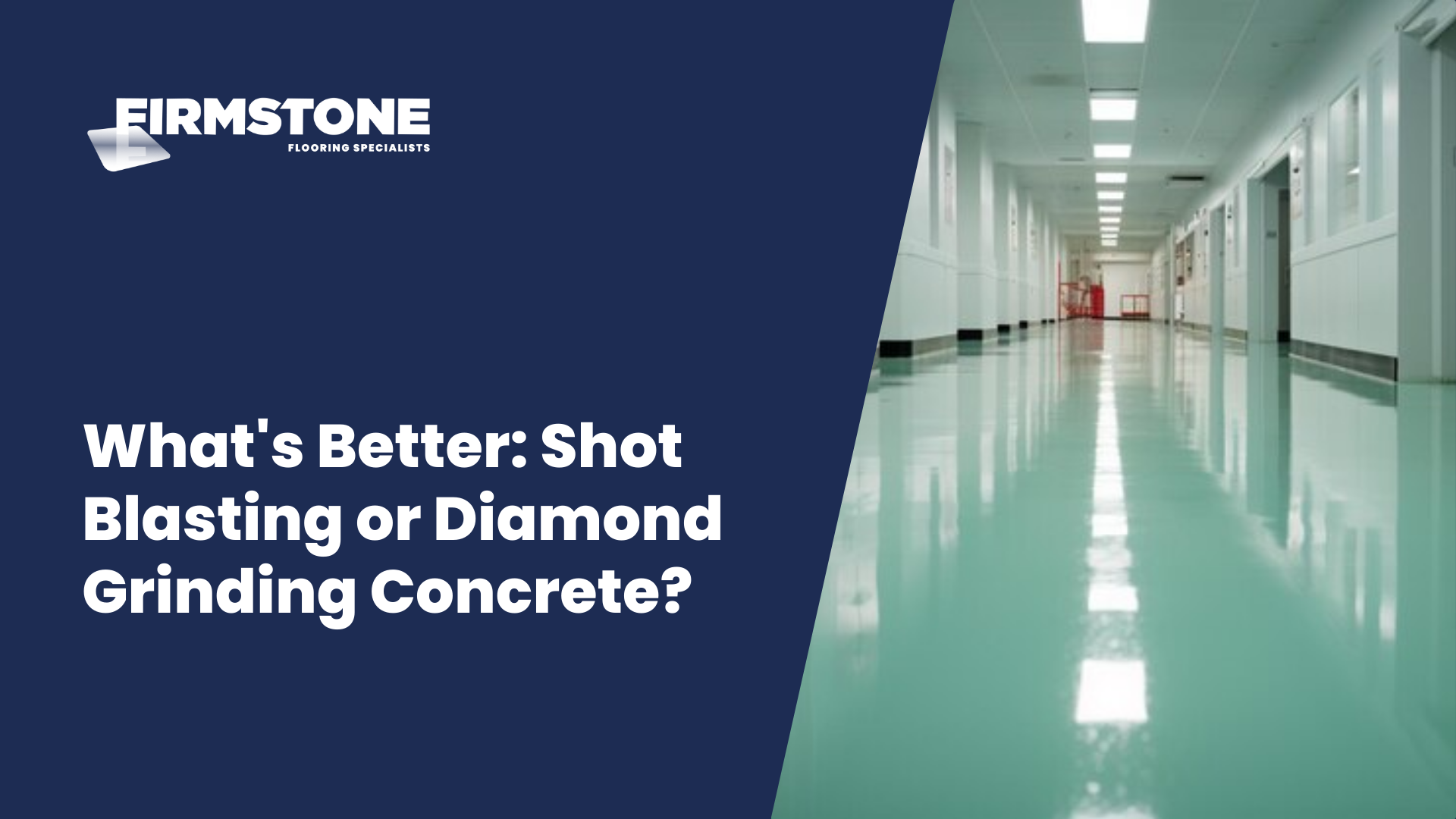
The debate between shot blasting and diamond grinding for concrete surface preparation continues to challenge contractors and project managers. These distinct methods each offer unique advantages in achieving the desired concrete profile, yet neither emerges as a universal solution. While shot blasting excels in creating aggressive textures for thick coatings, diamond grinding delivers the precision needed for decorative finishes. Understanding the key differences between these techniques reveals why choosing the ideal method requires careful consideration of multiple factors.
Surface preparation stands as a critical foundation for any concrete finishing project, with shot blasting and diamond grinding emerging as two distinct methodologies. Each technique offers unique approaches to concrete surface preparation, targeting different project requirements and finish specifications.
Shot blasting propels high-velocity abrasive media against concrete floors, efficiently removing contaminants while creating a rougher surface profile. This method proves particularly effective for large-scale projects where time and cost efficiency are paramount.
In contrast, diamond grinding utilizes specialized tools to methodically remove high spots and achieve precise surface refinement. This process creates an ideal foundation for specific coatings, particularly urethane and epoxy applications.
The selection between these methods often depends on the desired Concrete Surface Profile (CSP) rating and the intended final application of the treated surface. Both techniques work alongside advanced vacuum systems to maintain a clean work environment and minimize airborne debris during preparation.
The selection of concrete preparation methods plays a pivotal role in determining the long-term success of floor coating applications. The debate between shot blasting vs diamond grinding centers on their distinct effects on coating performance.
Diamond grinding creates a smooth finish on concrete surfaces, making it ideal for thin film applications. This method produces a consistent surface profile that enhances adhesion for epoxy and urethane coatings.
Conversely, shot blasting generates a rougher texture suited for heavy coatings, effectively removing contaminants while creating a coarser profile.
The impact on concrete floor durability varies considerably between these methods. While shot blasting may lead to surface irregularities affecting thin coating adhesion, diamond grinding provides the uniform finish necessary for peak coating performance, particularly in applications requiring precise thickness control.
Proper surface preparation techniques are essential for achieving optimal bonding and ensuring the longevity of commercial flooring installations.
When evaluating concrete preparation methods, cost and time factors greatly influence project decisions.
Shot blasting emerges as the more cost-effective and faster option, particularly for extensive projects, enabling shorter project timelines by efficiently covering large surface areas.
Diamond grinding, despite higher setup costs, delivers a smoother finish that enhances coating adhesion and potentially reduces long-term maintenance costs.
While this method requires multiple passes and more time to complete, its superior surface preparation can minimize future repairs and associated expenses.
Project managers must carefully weigh these considerations against specific requirements.
Although shot blasting offers immediate cost savings and quicker completion, surface imperfections may necessitate additional remedial work.
Conversely, diamond grinding's initial investment often translates to better long-term value through improved coating performance and reduced maintenance needs.
Comparing surface characteristics between shot blasting and diamond grinding reveals distinct differences in finish quality and profile depth.
Shot blasting creates a coarser surface profile with potential pits, valleys, and fractures, resulting in a higher Concrete Surface Profile that may affect coating performance.
Diamond grinding, conversely, produces a more refined surface texture that enhances coating adhesion for epoxy and urethane applications.
Its adjustable grit levels enable customization of the surface finish from matte to high gloss, achieving CSP ratings between 1 and 4.
This versatility in finish quality makes diamond grinding particularly advantageous for projects where aesthetics are essential.
The smoother, more controlled surface profile generated by diamond grinding typically leads to better durability and visual appeal compared to the rougher texture produced by shot blasting.
Surface finish considerations naturally lead to broader project-specific factors that determine the best method selection between shot blasting and diamond grinding.
The choice depends heavily on coating thickness requirements, with shot blasting being ideal for applications of 1/16 inch or greater, while diamond grinding suits thin-film coatings where superior coating adhesion is essential.
Project timelines and efficiency requirements also influence the decision. Shot blasting offers faster surface preparation for large areas, making it cost-effective for industrial projects.
Diamond grinding, though more time-intensive, provides precise control over surface profile and finish quality, particularly beneficial in commercial spaces.
Environmental considerations and specific application requirements should be evaluated by experienced contractors, who can assess factors such as surface condition, desired finish, and location-specific needs before recommending the most suitable preparation method.
Both shot blasting and diamond grinding demand specialized equipment configurations that fundamentally shape their operational capabilities.
Shot blasting equipment operates through a centrifugal wheel system that propels abrasive media, requiring substantial power sources and HEPA dust collection systems. In contrast, diamond grinding machines utilize diamond-tipped discs coupled with vacuum systems for debris control.
While shot blasters represent an efficient method for large-scale operations, they demand considerable staging space and proper calibration for media recycling.
Diamond grinding machines offer more compact solutions but require consistent monitoring of diamond tooling wear.
The maintenance requirements vary greatly between the two systems, with shot blasters focusing on media flow and recycling systems, while grinding machine upkeep centers on diamond pad condition and vacuum system effectiveness to maintain peak performance on the surface of the concrete.
Neither shot blasting nor diamond grinding emerges as universally superior for concrete surface preparation. The best choice depends on project-specific requirements, including coating specifications, surface condition, and desired finish. Shot blasting excels in cost-effectiveness for larger areas, while diamond grinding delivers superior smoothness for thin-film applications. Careful evaluation of these factors guarantees the most effective surface preparation method for each unique project.